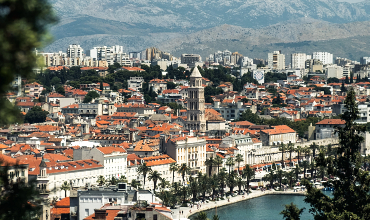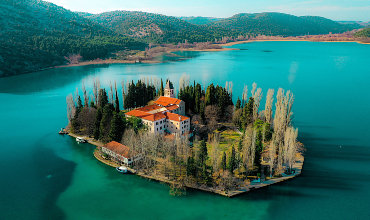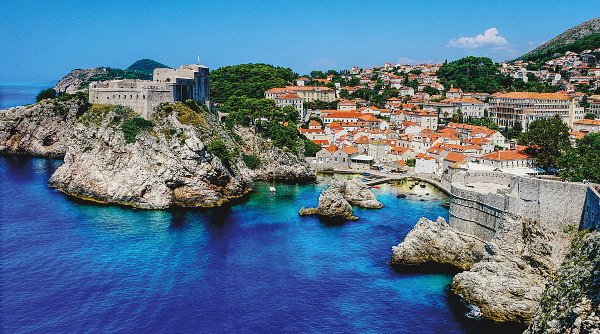Croatia has everything for all kinds of tourists to enjoy, from beautiful Mediterranean weather and crystal clear oceans that are perfect for lazing beside to diverse landscapes that are just waiting to be explored.
With so much variety in this small European nation, it can be a struggle to fit everything into your tour itinerary. So prepare yourself accordingly and create the perfect vacation by understanding the things to know before traveling to Croatia.
Currency
Croatia has made a change to its national currency, officially moving from the Croatian Kuna over to the Euro after becoming the 27th nation to join Europe’s passport-free Schengen zone and an official member of the European Nations. A number of border checkpoints have been removed around Croatia’s bordering EU countries. This means that tourists traveling to Croatia this year can expect freedom to move between bordering countries without the need to obtain new visas or bring a different form of currency with them. One of the biggest things to avoid during your travels to Croatia is bringing the old Croatian Kuna as your spending money. The likelihood of finding a currency exchange company that still supplies the Kuna may be slim, but it is not entirely impossible.

Catvat
When to Travel
Croatia is known for hosting a lot of interesting events and fun festivities throughout the year which draw thousands of tourists into the country. Because the event dates change annually, it’s wise to research the dates so your tour dates align. You wouldn’t want to miss out on some of these incredible events. Some of these include the Dubrovnik Summer Festival, Zagreb Film Festival, Split Summer Festival, Rijeka Carnival, and one of the best Christmas Markets – Advent in Zagreb. For tourists seeking a quieter experience, try to avoid booking your vacation around the time of these events.
The best time to travel to Croatia depends on the traveler’s preference. For those seeking warm, sunny weather, between May and September is a good time to visit with July and August being the hottest months. However, it is also peak season so expect more crowds.
Springtime is magnificent when Croatia’s National Parks bloom with fragrant flowers. The weather is warm and pleasant and may be considered more comfortable than the hotter months of peak summertime. This makes it ideal if you are hoping to do more energetic activities, such as hiking.
Alternatively, the colder months can show a different side to Croatia. Inland you will find snow-covered towns, frozen lakes, and glistening waterfalls throughout the islands and national parks. Tourists can enjoy spending time at ski resorts and partaking in fun wintertime activities including sledding or ice skating.

Split
Transportation
It is fairly easy to travel around mainland Croatia with the Pelješac Bridge connecting the north and south without the need to drive through Bosnia and Herzegovina. Renting a car is one of the most comfortable ways to explore the inland parts of Croatia. There’s also the option of booking a private yacht.
Public transportation is known to be quite efficient in Croatia, but solely relying on it for travel can be a little difficult. Especially as delays and cancellations can easily sour an otherwise incredible trip.
Many ferry routes only operate during the high season, meaning you will need to meticulously plan your vacation around the ferries’ schedules. It is also not guaranteed they will go to all of the locations you wish to visit, as some islands are not accessible by public transportation or connected by bridges to the mainland.
To avoid disappointment, Adventures Croatia recommends booking a pre-planned tour, with transportation included to ensure a relaxing vacation and make planning your vacation a whole lot easier.

Visovac Island
Entry into Croatia
One of the most important things to prepare in advance is the required travel documents for entry into Croatia. For US and Canadian citizens, a visa is not required to enter the country as Croatia is a member of the Schengen area. It is possible to stay up to 90 days for tourism or business during any 180-day period. If you intend to stay longer than this, you will be required to apply for a visa.
However, if you do intend to travel outside of the Schengen area, you may be required to obtain a visa prior. Always double-check if the country you are planning on traveling to requires a visa beforehand here.
Please be aware that things can change due to certain circumstances. Always double-check Croatia International Travel Information on the State Government’s website to ensure that you are up-to-date with the latest travel information.
To ensure you are eligible for entry into Croatia you must have:
- A valid U.S. passport to enter Croatia – EU regulations require that U.S. and Canadian passport holders have at least three months of validity on their passport from the date of departure from Croatia.
- A free stamp page in your passport – Only one page is required for an entry stamp in and out of Croatia.
- Money – There are restrictions on how much money you can bring in and out of Croatia. The limit is currently set at up to 10,000 euros either way.
Source: Adventures Croatia and Wheels Up Network


